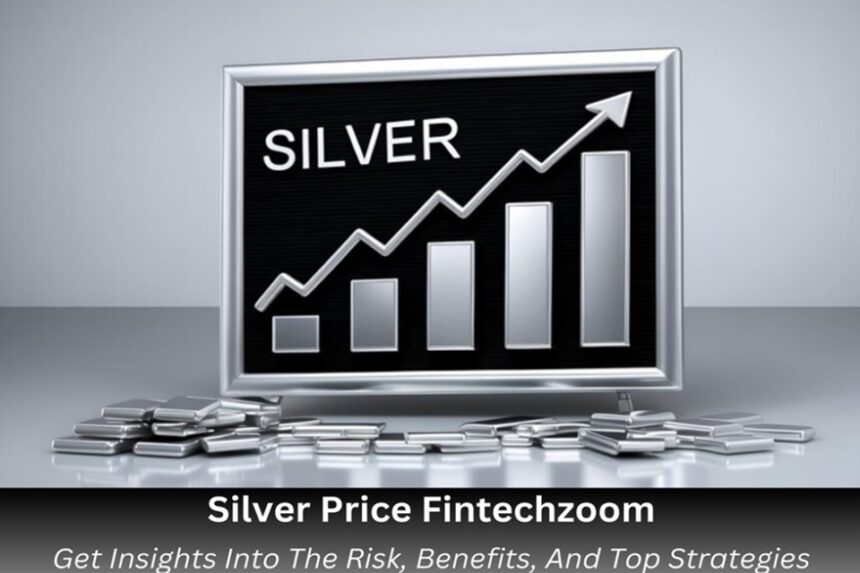Silver has long been revered as both a valuable asset and a versatile material, utilized in various industries and cherished by investors. However, the price of silver can be highly volatile, influenced by numerous market conditions and economic factors. As such, understanding the intricacies of silver pricing is crucial for investors. Fintechzoom, a leading financial news and analysis platform, offers in-depth insights and up-to-date information on the silver market. This article explores the risks, benefits, and top strategies for investing in silver using Fintechzoom as a key resource.
What Is Fintechzoom?
Fintechzoom is a comprehensive financial platform that provides real-time news, analysis, and insights into various markets, including precious metals like silver. It offers tools and data that are invaluable for investors looking to make informed decisions. By delivering up-to-the-minute price updates, expert opinions, and in-depth market analysis, Fintechzoom has become a go-to source for those interested in tracking silver prices and market movements.
Silver Price Volatility: Risks To Consider
Investing in silver comes with its share of risks, particularly due to its price volatility. Silver prices can swing dramatically due to various factors, including market speculation, geopolitical events, and economic conditions. These price fluctuations can pose significant risks for short-term investors, who may find it challenging to navigate these sudden changes. Understanding the factors that contribute to this volatility is essential for managing risk and making informed investment decisions.
Factors Impacting Silver Prices
Silver prices are influenced by a range of factors that investors should be aware of:
- Currency Fluctuations: Since silver’s price is based on the U.S. dollar, changes in currency values can affect its price. When the dollar is weaker, silver becomes more appealing to global investors, leading to increased demand and higher prices.
- Industrial Demand: Silver’s use in industries like electronics and solar energy means its price is tied to industrial demand. Changes in technology or industrial production can significantly affect silver’s market value.
- Market Speculation: Investors and traders often speculate on silver prices, leading to price swings that may not reflect the metal’s actual supply and demand. Speculative trading can create additional volatility in the market.
- Economic Conditions: During economic instability, silver is often seen as a safe haven, driving up its price. Conversely, during periods of economic growth, industrial demand for silver may increase, also pushing prices higher.
Benefits Of Investing In Silver
Despite the risks, silver remains an attractive investment for several reasons:
- Hedge Against Inflation: Silver, like gold, is frequently employed as a safeguard against inflation. Its worth tends to increase as the buying power of government-issued currencies declines, making it a dependable store of value.
- Industrial Applications: Silver’s extensive use in various industries, including electronics and renewable energy, ensures ongoing demand. This demand supports silver’s value and provides opportunities for long-term growth.
- Global Accessibility: Silver is traded globally, making it accessible to investors worldwide. Whether through physical bullion, digital assets, or ETFs, there are numerous ways to invest in silver.
- Historical Resilience: Historically, silver has maintained its value even during economic downturns. Its long-standing reputation as a stable asset adds credibility to its role in a diversified investment portfolio.
Top Strategies For Silver Investment
Here are some top strategies to consider when investing in silver:
- Physical Silver Investments: Purchasing physical silver, such as coins or bullion, allows investors to own a tangible asset. While storage and security are concerns, physical silver can serve as a hedge against economic uncertainty.
- Silver ETFs: Exchange-traded funds (ETFs) offer a convenient way to invest in silver without the need for physical storage. ETFs track the price of silver and can be easily bought and sold on stock exchanges.
- Investing in Silver Mining Companies: Buying shares in companies that mine or produce silver can be another way to gain exposure to silver prices. This approach allows investors to benefit from rising silver prices while also investing in a company’s growth potential.
- Silver Jewelry and Collectibles: Investing in silver jewelry and collectibles combines aesthetic value with financial investment. These items can appreciate over time, especially if they are rare or of high craftsmanship.
Final Words
Investing in silver offers both risks and rewards, with price volatility being a significant factor to consider. However, with the right strategies and resources like Fintechzoom, investors can navigate the silver market more effectively. By staying informed about market trends, economic conditions, and the factors influencing silver prices, investors can make better decisions and capitalize on opportunities in the silver market. Whether through physical silver, ETFs, or mining stocks, understanding the dynamics of silver investing is key to achieving long-term financial success.
FAQs
What is Fintechzoom, and how does it help investors?
Fintechzoom is a financial news and analysis platform that provides real-time data, expert opinions, and market insights, helping investors make informed decisions, particularly in the silver market.
What are the primary risks of investing in silver?
The main risks include price volatility, industrial demand fluctuations, storage costs for physical silver, and the impact of global economic and political factors on silver prices.
Why is silver considered a hedge against inflation?
Silver often retains or increases in value when the purchasing power of fiat currencies decreases, making it a reliable asset during inflationary periods.
How can I invest in silver without buying physical metal?
You can invest in silver through ETFs, shares in silver mining companies, or even silver-based collectibles and jewelry, which offer alternatives to owning physical silver.










